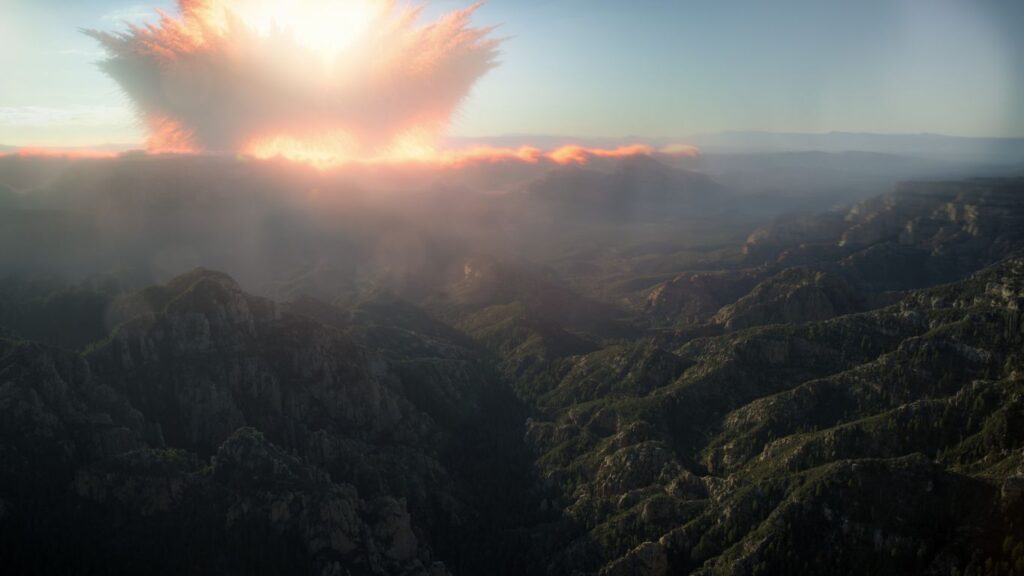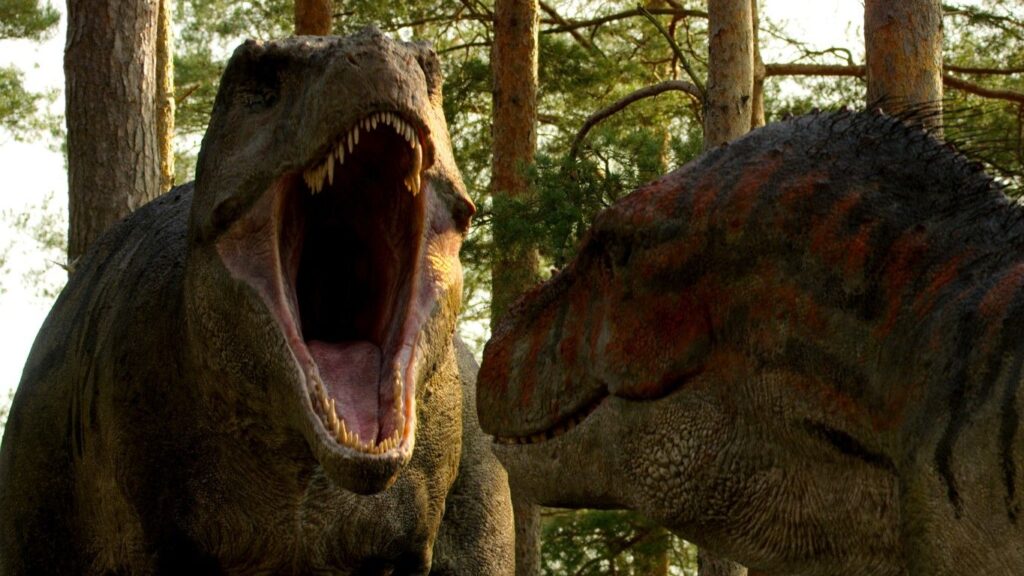66 million years ago, dinosaurs were the dominant species on Earth. However, an asteroid the size of Mt. Everest struck the planet at 100,000 kilometers per hour at the Yucatan Peninsula in Mexico. The giant rock vaporized on impact, unleashing the power of a billion atomic bombs, causing a domino effect of death and destruction. The skies were covered in ash, with heated rocks falling from the sky. The dinosaurs around the world were slowly suffering, and there was no escape. This crucial event in our planet’s history is but one moment recreated in vivid detail in Netflix’s Life on Our Planet, a wildlife documentary series that covers a four billion-year journey on Earth.
“That’s obviously a very VFX-heavy scene,” showrunner Dan Tapster said during a sneak peek presentation held at Amblin Entertainment. “But it’s important to point out that actually with Life on Our Planet, 40% of every episode is VFX, but 60% is modern-day, natural history. And we made that decision because we wanted to give the audience an opportunity to understand the context of life that we coexist with today, to understand the backstory that it’s been on.”

Life on Our Planet contains 8 one-hour episodes and covers the past and present. To bring extinct creatures to life in a photorealistic way, Silverback Films, Amblin Television and Industrial Light & Magic used the latest in science and technology. Some of the techniques emulate the way modern wildlife filmmakers capture nature with telephoto lenses.
The series, narrated by Morgan Freeman (The Dark Knight trilogy), covers the first single-celled organism and the first animal that went from sea to land to five mass extinction events and the sixth humans are facing right now. Audiences will also get to see the daily lives of dinosaurs before their extinction and animals that exist today including the Humpback whale and their heat run.
“I think what’s really important about this series is we wanted the highest quality of VFX and the highest quality of natural history,” said executive producer Keith Scholey from Silverback Films. “We wanted people to see natural history footage that they’ve never seen before. And actually, those underwater shots, traveling up, those whales are going in about seven knots, it’s about 10 miles an hour, which in water is really hard to have a camera so we have to put a camera over the side of the boat. Then the boat is bouncing around so we had to create a stabilized camera that would take all the bumps out. And that’s why you get those images which have never been seen before.”
With Steven Spielberg’s Amblin Television having a part in the production, there are a few references to his body of work including Jurassic Park involving a giant dinosaur footprint and water ripples.
“There were a couple of Easter eggs in the series, a couple of Jurassic Park ones, and a couple from other movies, too,” showrunner Dan Tapster tells Nerd Reactor. “So yes, we try to slyly follow in the footsteps of Stranger Things and leave a few crumbs for the audience.”
Life on Our Planet premieres on Netflix on October 25, 2023.







